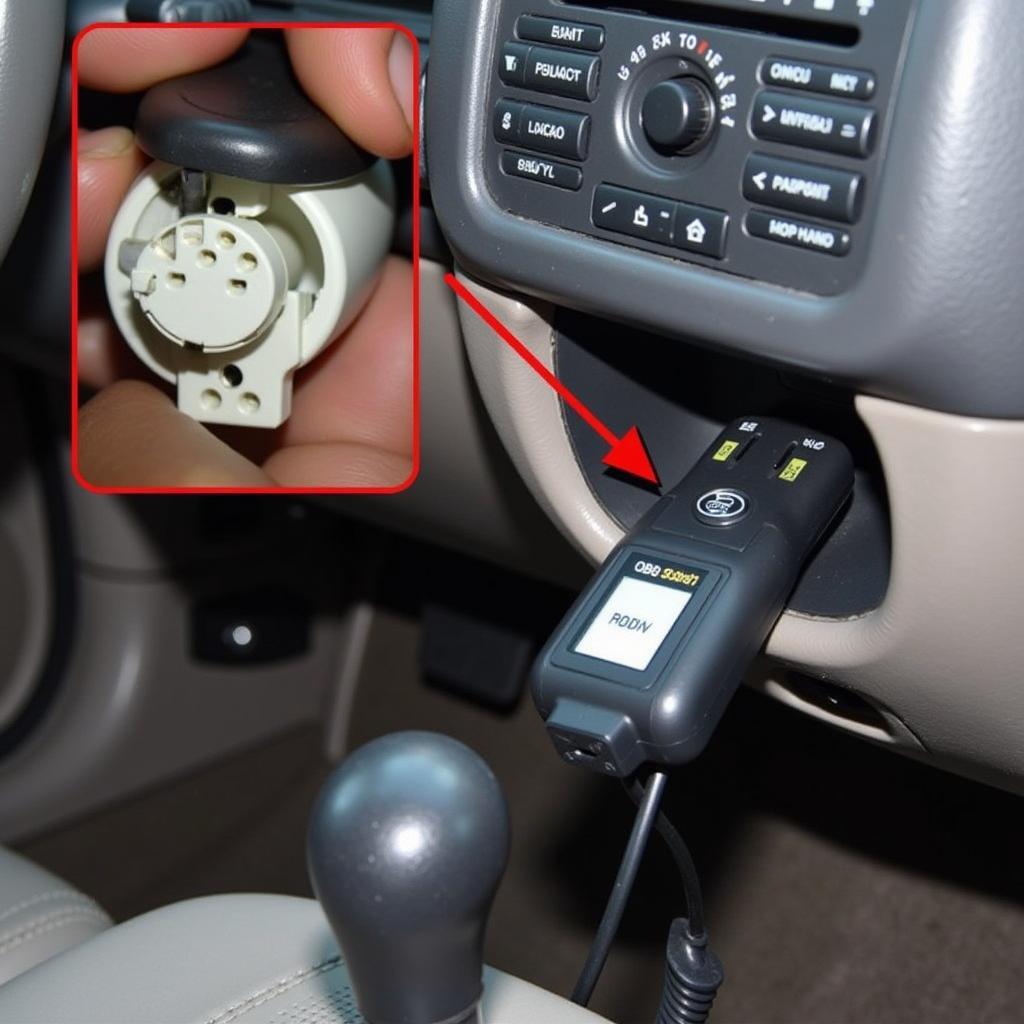If your 2001 Ford Taurus is displaying the OBD2 code P0174, you’ve come to the right place. This code indicates a problem with your car’s engine air-fuel mixture, specifically that it’s running lean on Bank 2. A lean condition means there’s too much oxygen and not enough fuel, which can lead to reduced engine performance, poor fuel economy, and even engine damage in severe cases. This article will guide you through understanding the P0174 code, its common causes in a 2001 Ford Taurus, and the steps to diagnose and fix the issue.
Understanding OBD2 Code P0174
The OBD2 (On-Board Diagnostics) system in your car continuously monitors various engine parameters. When it detects a problem, it triggers a specific code, such as P0174, and illuminates the check engine light on your dashboard. The code P0174 specifically means:
- P0174: System Too Lean (Bank 2)
- “System Too Lean”: This indicates that the air-fuel mixture in your engine’s cylinders is off-balance, with too much air and not enough fuel.
- “Bank 2”: In a V-engine like the one in a 2001 Ford Taurus, “Bank 2” refers to the side of the engine that doesn’t contain cylinder #1.
Common Causes of P0174 in a 2001 Ford Taurus
While several factors can trigger the P0174 code, some of the most prevalent culprits in a 2001 Ford Taurus include:
- Vacuum Leak: A leak in the intake manifold, vacuum hoses, or other vacuum-operated components allows unmetered air to enter the engine, disrupting the air-fuel ratio.
- Faulty Oxygen Sensor: Oxygen sensors (O2 sensors) play a crucial role in monitoring the oxygen content in the exhaust and providing feedback to the engine control unit (ECU) to adjust the air-fuel mixture. A malfunctioning O2 sensor on Bank 2 can send incorrect signals, leading to a lean condition.
- Fuel Injector Problems: If a fuel injector on Bank 2 is clogged, dirty, or malfunctioning, it might not deliver the correct amount of fuel, causing a lean mixture.
- Fuel Pressure Issues: Low fuel pressure, often caused by a failing fuel pump or a clogged fuel filter, can result in insufficient fuel delivery, leading to a lean code.
- Exhaust Leaks: Leaks in the exhaust manifold or exhaust pipes, particularly those located before the O2 sensors, can affect their readings and trigger a lean code.
How to Diagnose and Fix P0174 in Your 2001 Ford Taurus
It’s important to diagnose the exact cause of the P0174 code before attempting any repairs. Here’s a step-by-step approach:
-
Read the Code: Use an OBD2 scanner to read the code(s) stored in your car’s ECU. This will confirm the P0174 code and identify any other related codes.
-
Inspect for Vacuum Leaks: Carefully check the intake manifold, vacuum hoses, and other vacuum-operated components for any cracks, loose connections, or damage. You can also use a carburetor cleaner to spray around suspect areas while the engine is idling. If the engine speed changes, it indicates a vacuum leak.
-
Check the Oxygen Sensor: Locate the oxygen sensors on Bank 2 and inspect them for damage or excessive carbon buildup. You can use a multimeter to test their voltage output or consult a mechanic for professional testing.
-
Inspect Fuel Injectors: If a vacuum leak or faulty oxygen sensor isn’t the culprit, move on to inspecting the fuel injectors on Bank 2. You can check their resistance using a multimeter or have them professionally tested.
-
Test Fuel Pressure: Use a fuel pressure gauge to check the fuel pressure at the fuel rail. Consult your vehicle’s repair manual for the correct pressure specifications. If the pressure is low, the fuel pump or fuel filter might be the problem.
-
Examine for Exhaust Leaks: Visually inspect the exhaust manifold and exhaust pipes for any cracks, holes, or loose connections, particularly those located before the oxygen sensors.
Conclusion
Addressing the OBD2 code P0174 promptly in your 2001 Ford Taurus is crucial to prevent further engine problems and ensure optimal vehicle performance. By following these diagnostic steps and addressing the root cause, you can restore your engine’s air-fuel balance, improve fuel efficiency, and enjoy a smoother ride. However, if you’re not comfortable working on your car, it’s best to consult a qualified mechanic for diagnosis and repair.


